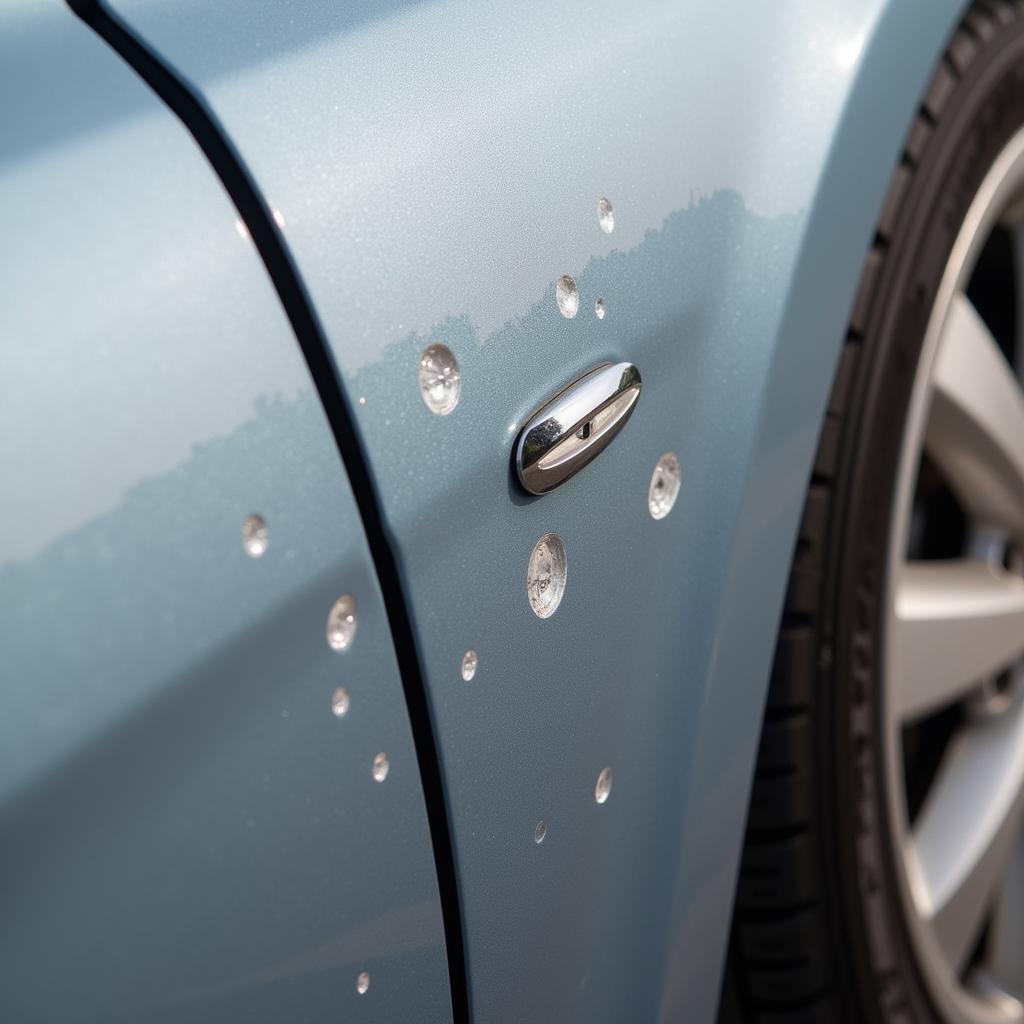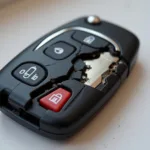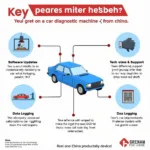Micro paint blisters on your car can be a frustrating sight. These tiny bubbles, often appearing as raised bumps under the paint surface, not only detract from your car’s appearance but can also signal underlying issues if left untreated. This guide will provide a comprehensive understanding of how to diagnose, prevent, and repair these miniature menaces, keeping your car looking its best. Learn how to repair micro paint blisters on car effectively and efficiently.
Contamination under the paint is a frequent culprit behind blistering. This can occur during the painting process if the surface isn’t properly cleaned or if moisture becomes trapped. Environmental factors, such as acid rain and bird droppings, can also contribute to paint blistering over time. Knowing the underlying cause is crucial for effective repair. For more serious paint bubbling issues, you might want to check out more resources. Check out this helpful guide on car paint bubbling repair.
Identifying and Diagnosing Micro Paint Blisters
Before starting any repair, it’s essential to correctly identify the problem. Micro paint blisters are typically small, less than a few millimeters in diameter, and appear as raised bubbles under the paint’s surface. They can be clustered together or scattered across a panel. Gently pressing on a blister might reveal a soft spot or even cause the paint to flake slightly. Identifying the location and extent of the blistering is the first step towards a successful repair.
Common Causes of Micro Paint Blisters
Several factors can contribute to the formation of micro paint blisters. Poor surface preparation during painting is a leading cause. If the surface isn’t thoroughly cleaned and degreased, contaminants can become trapped beneath the paint, leading to blistering. Moisture trapped under the paint layer can also cause bubbling, especially in humid climates. Environmental factors, like prolonged exposure to UV radiation, acid rain, and bird droppings, can weaken the paint’s adhesion and promote blistering.
DIY Repair of Micro Paint Blisters
For minor micro blisters, a DIY approach is often feasible. Start by carefully washing and drying the affected area. Using a fine-grit sandpaper (2000-grit or higher), gently sand the blistered area until the surface is smooth and the blisters are removed. Be careful not to sand through the primer or underlying layers. Clean the area thoroughly with a tack cloth to remove any sanding dust. Apply a thin coat of touch-up paint that matches your car’s color, allowing each coat to dry completely before applying the next. Finally, apply a clear coat to protect the repair and blend it with the surrounding paint. If you’re dealing with mini blisters, you can find specific guidance on how to repair mini paint blisters on car.
When to Consult a Professional
While minor blistering can be addressed with DIY methods, more extensive damage or blisters that have penetrated through the primer layer require professional attention. A professional auto body shop can assess the extent of the damage and determine the best course of action, which may involve repainting the entire panel or even more extensive repairs. Don’t hesitate to consult a professional if the blistering is severe or if you’re unsure about tackling the repair yourself. If you’re looking to fix a different paint issue, check out our guide on how to repair bird droppings on car paint.
Preventing Micro Paint Blisters
Prevention is always the best approach. Regularly washing and waxing your car can help protect the paint from environmental factors that contribute to blistering. Applying a paint sealant can provide an additional layer of protection. Parking your car in a garage or covered area can minimize exposure to UV radiation, acid rain, and bird droppings. Addressing any minor paint chips promptly can prevent moisture from seeping under the paint and causing blisters. Proper car care can significantly extend the life of your car’s paint and minimize the risk of micro blisters. For a broader understanding of paint blister repair, see our article on repair paint blister car.
Conclusion
Micro paint blisters, though seemingly minor, can be a sign of underlying issues and, if left untreated, can lead to more extensive damage. By understanding the causes, implementing preventative measures, and employing the correct repair techniques, you can keep your car’s paint looking its best and protect its value. Remember, addressing these minor imperfections promptly can prevent larger problems down the road. Knowing how to repair micro paint blisters on car is a valuable skill for any car owner.
FAQ
-
What causes micro paint blisters on cars? Several factors contribute to micro blisters, including poor surface preparation during painting, moisture trapped under the paint, and environmental factors like UV radiation and acid rain.
-
Can I repair micro paint blisters myself? Minor blisters can often be repaired with DIY methods. However, more extensive damage requires professional attention.
-
How can I prevent micro paint blisters? Regular washing and waxing, applying a paint sealant, and parking in a covered area can help protect your car’s paint.
-
What tools do I need to repair micro paint blisters? Fine-grit sandpaper, tack cloth, touch-up paint, clear coat, and masking tape are typically required.
-
When should I consult a professional for paint blister repair? If the blistering is extensive, has penetrated through the primer, or if you’re unsure about the repair process, consult a professional.
-
What is the difference between micro paint blisters and larger paint bubbles? Micro blisters are typically smaller and may indicate less severe underlying issues than larger bubbles, which can be a sign of more significant problems.
-
Can micro paint blisters reappear after repair? If the underlying cause isn’t addressed, blisters can reappear. Proper preparation and repair are essential for long-lasting results.
Possible Scenarios for Micro Paint Blisters
- Scenario 1: A few small blisters appear on the hood after a bird dropping is left for several days.
- Scenario 2: Numerous micro blisters develop on a recently repainted panel, suggesting improper surface preparation.
- Scenario 3: Blisters appear around a small paint chip, indicating moisture penetration.
Related Questions and Further Reading
- What are the best car waxes for protecting against environmental damage?
- How to repair larger paint bubbles on a car
- How to touch up car paint effectively
Contact us on WhatsApp: +1(641)206-8880, or Email: [email protected]. Our 24/7 customer support team is ready to assist you.



